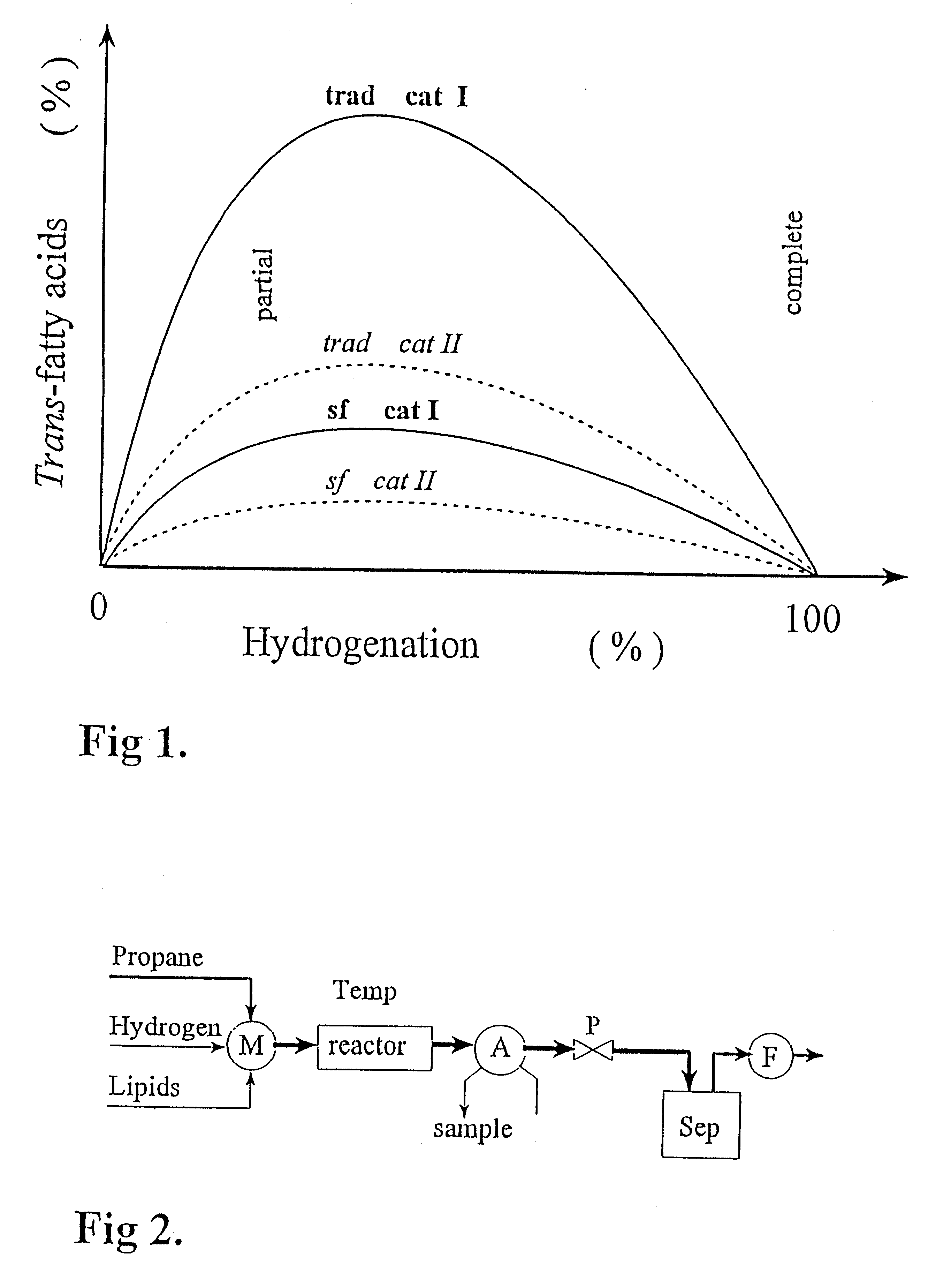Partially hydrogenated fatty substances with a low content of trans fatty acids
a technology hydrogenated fatty substances, which is applied in the field of partially hydrogenated fatty substances with a low content of trans fatty acids, can solve the problems of no commercial interest, no fatty acid production, and no questionable role of fatty acids
- Summary
- Abstract
- Description
- Claims
- Application Information
AI Technical Summary
Problems solved by technology
Method used
Image
Examples
example 1
Partial Hydrogenation of Methyl Esters From Rapeseed Oil Using a Palladium Catalyst
Composition and Amound of the Inlet Flow to the Reactor:
Productivity and Product Quality:
Comments
This example shows that a very high productivity (80 000 kg FAME / m.sup.3 h) and a low content of trans-fatty acids (10% of all FAME or expressed as <9%.multidot.IV at inlet) can be attained at near-critical conditions. The results above is only an example. We do not claim that it is the optimal conditions for the process. Others (Berben et al 1995) has minimized the trans-fatty acid content using the conventional technique. The productivity became much lower (700 kg triglycerides / m.sup.3 h) and the content of the trans-fatty acids became much higher (34%).
example 2
Complete Hydrogenation of Methylesters From Rapeseed Oil Using a Palladium Catalyst
Composition and Amount of the Inlet Flow to the Reactor:
Productivity and Product Quality:
Comments
This example shows that a tremendous productivity (700 000 kg FAME / m.sup.3 h) can be attained at near-critical conditions. The results above is only an example. We do not claim that it is the optimal conditions for the process.
example 3
Complete Hydrogenation of Methylesters From Rapeseed Oil Using a Nickel Catalyst
Composition and Amount of the Inlet Flow to the Reactor:
Productivity and Product Quality:
Comments
This example shows that a very high productivity (90 000 kg FAME / m.sup.3 h) can be attained using a nickel catalyst at super-critical conditions. The results above is only an example. We do not claim that it is the optimal conditions for the process.
PUM
| Property | Measurement | Unit |
|---|---|---|
| temperatures | aaaaa | aaaaa |
| pressure | aaaaa | aaaaa |
| time | aaaaa | aaaaa |
Abstract
Description
Claims
Application Information
 Login to View More
Login to View More - R&D
- Intellectual Property
- Life Sciences
- Materials
- Tech Scout
- Unparalleled Data Quality
- Higher Quality Content
- 60% Fewer Hallucinations
Browse by: Latest US Patents, China's latest patents, Technical Efficacy Thesaurus, Application Domain, Technology Topic, Popular Technical Reports.
© 2025 PatSnap. All rights reserved.Legal|Privacy policy|Modern Slavery Act Transparency Statement|Sitemap|About US| Contact US: help@patsnap.com


